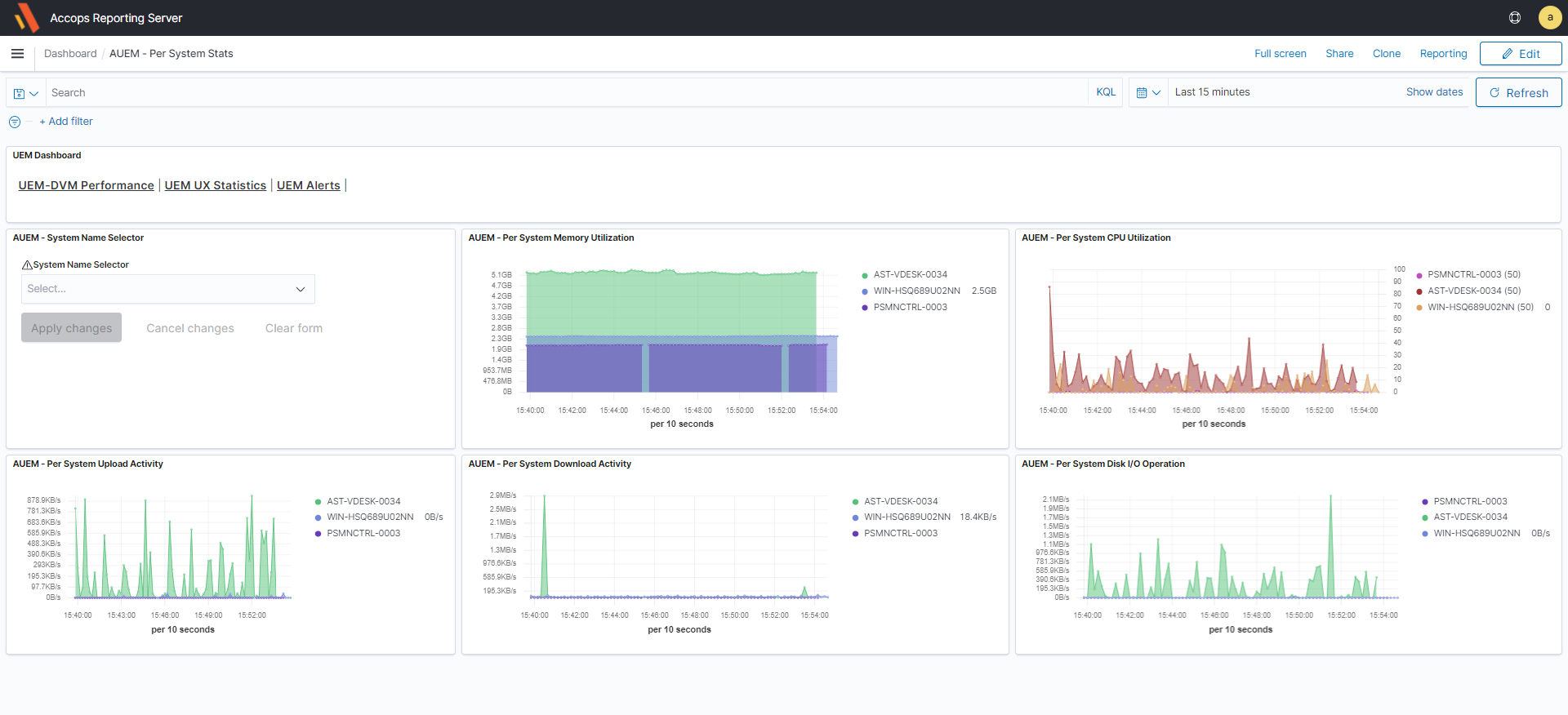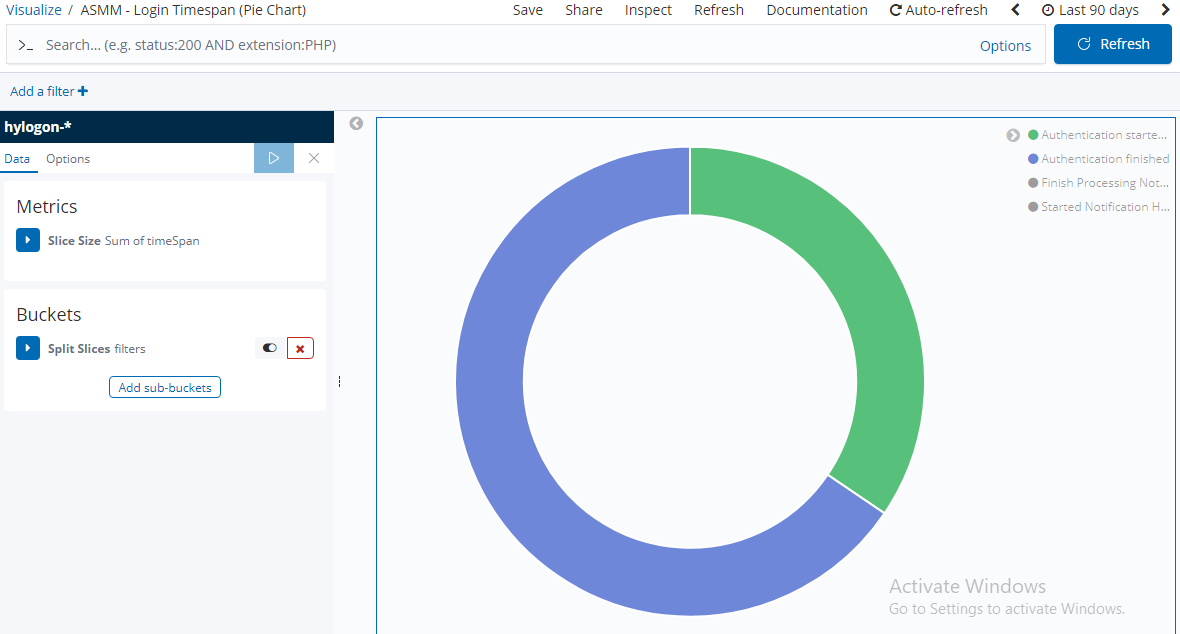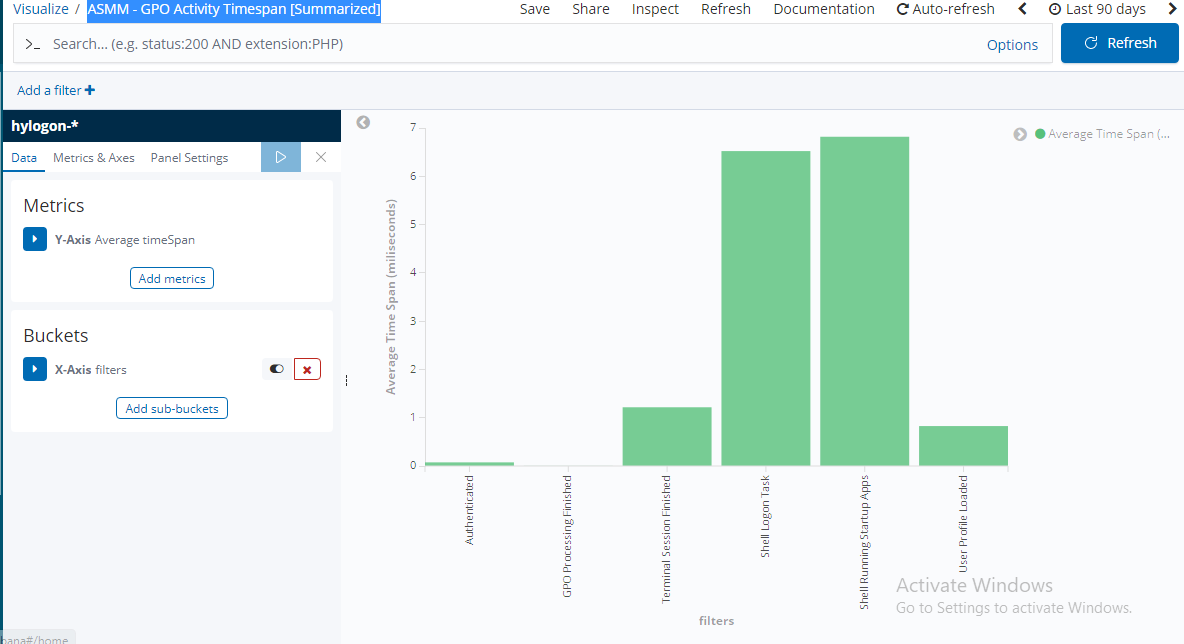Reports and Output on ARS
In previous sections, introduction of AUEM, information on AUEM components, installation, basic configurations are already given and it is very important to understand how AUEM and ARS configurations can help administrators to understand systems which need attentions, identify problematic areas of VDI deployments, overall health of deployment and performance bottlenecks.
In this sections, some of reports, graphs on ARS will be discussed which are generated based on data shared by AUEM.
Output on ARS
System (Virtual Desktop) Performance
Once the system performance monitoring has been enabled, following performance graphs of the configured desktops are available on ARS:

-
Overall memory utilization
-
Overall CPU utilization
-
Per system Disk I/O operations
-
Upload/ Download Activities
Based on the graphs Administrator can identify systems running low on resources or having high resource utilization, resolve the issues for better user experience.
Windows Events Monitoring
AWEM provides logon and critical event data to ARS which can be used to identify:
-
Overall Logon Experience of end-users
-
Identify systems having some critical functional issues
User Logon Time
A user will be able to work on provided remote desktop when all the logon processes are completed and desktop is ready for use.
A user logon process (initiating connection to showing remote desktop) can be further divided into multiple sub-tasks such as authentication of user, group policy processing.
Once AWEM (monitor.winlogon) is enabled, administrator will be able to view a drilled-down chart and data of user logon process on ARS. This granular information can help understand any specific transaction which is taking longer time than expected and corrective actions can be taken to improve user experience.
Below given are the examples of graphs available on ARS to demonstrate user-logon time:


Critical Windows Events
Once configured to monitor Windows events, AWEM will send critical events on Windows systems, and ARS can use those events to trigger alert or generate reports. Few examples of such critical event can be:
-
4005: An event which is generated when server is not responding.
-
1500: An event which is generated when default profile is corrupted.
More detailed information of the monitored events is available in section AWEM Advance Configuration
Anomalies Logs
Graphs or reports suggesting types of anomalies, frequency of anomalies can help administrators to understand the needed corrections in the system. E.g. Marketing team is complaining about slow systems. On checking ARS, it is found that anomalies are reported multiple times in a day for multiple users, where marketing team users are launching too many browser instances (Anomaly) and thus system is going low on resources and causing slowness.

